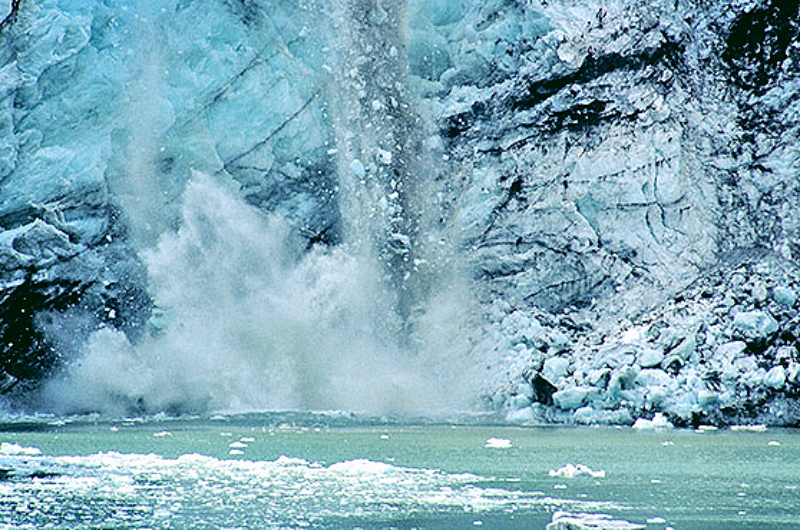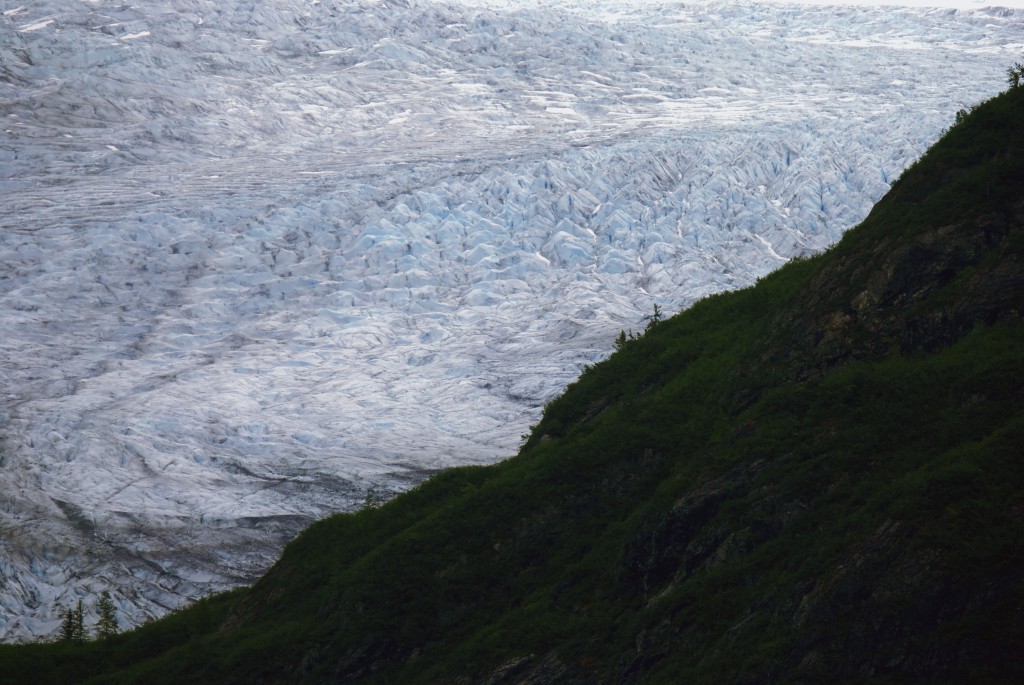
“When the sunshine is shifting through the midst of the multitude of the icebergs that fill the fjord and through the jets of radiant spray ever rising from the tremendous dashing and splashing of the falling and upspringing bergs, the effect is indescribably glorious.” ~ John Muir on Glacier Bay National Park
Lofty mountain peaks, dramatic ice-sculptured fjords and inlets, an abundance of marine wildlife and, most of all, massive tidewater glaciers, have made the 3.3 million acre park Glacier Bay National Park and Preserve an icy wilderness.
Margerie Glacier is a hanging glacier with its base about 600 feet above the floor of Tarr Inlet near its center. Margerie’s terminus was relatively stable in position through the 90’s; however, about 1998 the northern third of the terminus began a slight recession, forming a small embayment within the ice face. Over the last 3 years, this part of the terminus has thinned and the embayment has expanded. In contrast, the southern half of the margin appears to be slowly (feet per year) advancing.
Glacier Bay is rich with marine life, including the endangered humpback whale, orcas, threatened Stellar sea lions, harbor seals, sea otters and porpoises. In addition to marine mammals, Glacier Bay is home to a large bear population, both brown and black, as well as the blue glacier bear, a rare color phase of the black. Moose, wolves, Sitka blacktail deer, mountain goat and bald eagle also thrive in the park.

Puffins are one of the most distinctive sea birds in coastal Alaska. Both varieties found in Alaska – the tufted puffin and the horned puffin – feature bright-orange beaks and webbed feet with black-and-white coloring. Early sailors called them “sea parrots” because of this color scheme.
Lamplugh Glacier is about ¾ mile wide, 150 to 160 feet high at the face, 10 to 40 feet deep at the waterline, and over 16 miles long. The glacier heads in the Brady Icefield, which lies east of the Fairweather Range. Ice flow rates have not been measured but are estimated at 900 to 1000 feet per year. The margin is currently receding by calving in the central and eastern part of the ice face at variable rates we estimate to be around 50 to 100 feet per year.
Comments
Powered by Facebook Comments



